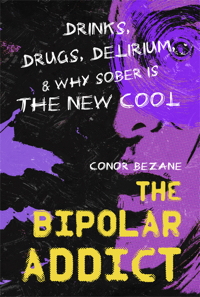The best tattoos are ones with hidden meanings, something that is thinly veiled but important to the person. I’m not talking about a fraternity insignia or butterfly tattoo. I’m referring to something like a semicolon tattoo, which holds a deeper meaning than grammatical prowess.
These tattoos are part of a movement called Project Semicolon.
In grammar, a semicolon is used to link two sentences together. It’s like a grammatical pause.
“A semicolon is used when an author could’ve chosen to end their sentence but chose not to,” the project’s site says. In regards to the tattoos, the site continues: “The author is you and the sentence is your life.”
Almost everyone has a dark past of some kind, especially those of us with bipolar or other psychiatric illnesses. What if you could symbolically put an end to that past? That’s what Project Semicolon is all about.
Here’s the Project Semicolon mission statement:
“Project Semicolon is a faith-based non-profit movement dedicated to presenting hope and love to those who are struggling with depression, suicide, addiction, and self-injury. Project Semicolon exists to encourage, love, and inspire.”
It’s about hope, love, and community.
Amy Bleuel is the founder of the project and has been diagnosed with depression and anxiety.
“I started [the project] to honor my father,” Bleuel told USA Today, “and to tell my story of my struggle with mental illness.” Bleuel’s dad committed suicide in 2003. “I wanted to tell my story to inspire others to tell their story. I wanted to start a conversation that can’t be stopped, a conversation about mental illness and suicide so we can address it and lower those rates.”
And start a conversation she did. Photos of the tattoos are popping up all over Instragram. Check out some of the best interpretations:
Bleul estimates that possibly one million people worldwide have the tattoo, according to an interview with ABC News.
“The positivity it is creating is amazing,” Bleul said. “There are so many stories that are continuing. The best feedback I would have to say is the stories where people are choosing to continue their stories. There is nothing more amazing than reading those stories.”
Stories like Michelle Jacques’.
“What I have will never really go away,” she says on the site. “Some days are better than others. I push through, for my beautiful daughters, and for my close friends. I’m done missing out on the beauty of life.”
From Tyrone Newsom: “Each life is an open book, and each individual is their own author, with different styles of writing, different handwriting, and a different shade of ink,” he says, telling his story on the site. “Despite the challenges we may face, and though we will all struggle with writers block at various points in our lives, only we can choose to pick up the pen and write the next page. By learning the difference from looking back at the last page with regret, and learning from the previous chapter, we become stronger people. As we become stronger people, we become happier in life.”
These people could’ve committed suicide but didn’t. And now they have a tattoo that is a badge of honor for surviving.
There are so many bad tattoos out there, but this one, a semicolon, is not only clever but a profoundly significant conversation starter. Anything to increase dialogue about mental health is respectable — and empathetic. Raising awareness about mental illness is difficult. Answering the question “What does your tattoo mean?” is one way to do it, one person at a time. It is through these intimate conversations that we can reach out beyond what any nonprofit organization or media campaign could ever do. It is the power of the people. And that is honorable.












